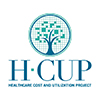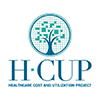National Healthcare Quality and Disparities Report
Latest available findings on quality of and access to health care
Data & Analytics
- Data Infographics
- Data Visualizations
- Data Tools
- Data Innovations
- All-Payer Claims Database
- Consumer Assessment of Healthcare Providers and Systems (CAHPS®) Program
- Healthcare Cost and Utilization Project (HCUP)
- Medical Expenditure Panel Survey (MEPS)
- National Healthcare Quality and Disparities Report Data Tools
- Network of Patient Safety Databases
- AHRQ Quality Indicator Tools for Data Analytics
- Surveys on Patient Safety Culture
- United States Health Information Knowledgebase (USHIK)
- Data Sources Available from AHRQ
Data Resources
Filter by Topic
- Access to Care (4)
- Adverse Events (1)
- Ambulatory (2)
- By Payer (2)
- By State (3)
- Children (3)
- Children (1)
- (-) Children/Adolescents (1)
- Clinicians (1)
- Community Pharmacies (1)
- Costs (2)
- Costs & Charges (1)
- Coverage (4)
- Data (3)
- Discharges by State (1)
- Disparities (2)
- Elderly (1)
- Element Definitions, Values & Information Models (1)
- Emergency Departments (4)
- Employer (1)
- Estimates (State & Metro) (1)
- Expenditures & Projections (3)
- Health (5)
- Health Care (8)
- Health Conditions (5)
- Health Plans (3)
- Health Systems (1)
- Hospital Characteristics (2)
- Hospitalizations (10)
- Household Spending (1)
- Injuries Seen (1)
- Inpatient Care (1)
- (-) Insurance (9)
- Medicaid (1)
- Medicare (1)
- Men (1)
- Mental Health (3)
- Mental Health and Substance Abuse Disorders (2)
- Obesity (1)
- Opioids (1)
- Patient Experience (1)
- Payment Sources (1)
- Premiums (1)
- Prescription Drugs (1)
- Preventable (1)
- Private (1)
- Quality (3)
- Readmissions (2)
- Safety Culture (1)
- SCHIP (1)
- Spending (2)
- State (1)
- Surgery (3)
- Systematic Review (1)
- Systems - Characteristics (1)
- Uninsured (2)
- Use (3)
- Visits (2)
- Women (2)
Data Resources
The Agency for Healthcare Research and Quality (AHRQ) offers practical, research-based tools and other resources to help a variety of health care organizations, providers and others make care safer in all health care settings.
Results
1-10 of 10 Resources displayed
These HCUP Statistical Briefs provide statistics on hospital costs and use in the United States focused on specific types of insurers or payers—Medicaid, Medicare, and private insurance.

These HCUP Statistical Briefs provide statistics on hospital costs and use in the United States focused on the uninsured population.

The MEPS Household Component fields questionnaires to individual household members to collect nationally representative data on demographic characteristics, health conditions, health status, use of medical care services, charges and payments, access to care, satisfaction with care, health insurance coverage, income, and employment.

The MEPS Insurance Component fields questionnaires to private and public sector employers to collect data on the number and types of private health insurance plans offered, benefits associated with these plans, annual premiums, annual contributions by employers and employees, eligibility requirements, and employer characteristics.

Children can be identified by the age variables in the MEPS-Household Component, allowing most MEPS analyses to be performed for children.

Using the age and the insurance coverage variables from the MEPS allows for analysis of children's health insurance coverage. MEPS also collects data on coverage provided by the State Children's Health Insurance Program.

Health insurance coverage of the U.S. population by person and family-level characteristics is collected through the MEPS Household Component. Job-based health insurance coverage offered by employers is collected through the MEPS Insurance Component.

MEPS provides state-level health insurance data for employer-sponsored plans through the MEPS-Insurance Component. Beginning in 2004, MEPS-IC also provides a subset of these data for selected metropolitan areas.

The MEPS identifies persons who were uninsured for a full year, uninsured for a given point-in-time, and uninsured for a period of time during the course of a year (known as ever uninsured). In addition to the tables, query tool, and publications listed below, data on the uninsured and their utilization of health services, expenses, and previous health insurance coverage can be downloaded from data files for further analyses.

MEPSnet is a collection of analytical tools that operate on MEPS data in two categories: MEPSnet/Household Component provides easy access to nationally representative statistics of health care use, expenditures, sources of payment, and insurance coverage for the U.S. civilian noninstitutionalized population. MEPSnet/HC allows you to generate statistics using MEPS Household Component public use files. MEPSnet/Insurance Component provides easy access to national and state level statistics and trends about health insurance offered by private establishments and state and local governments. MEPSnet/IC guides you step-by-step in locating statistics of interest across all available years using data from the MEPS Insurance Component Summary Data Tables.



